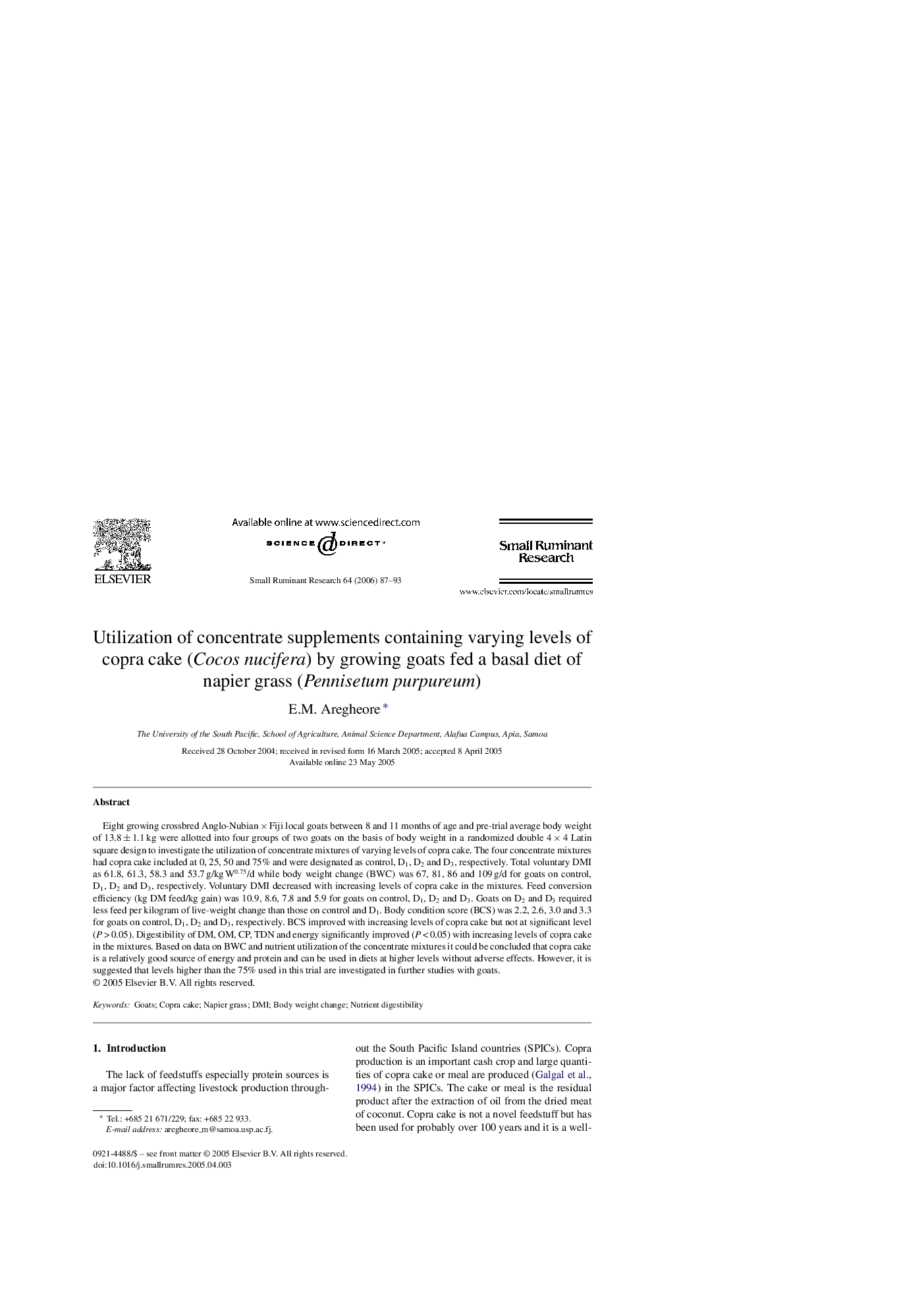| Article ID | Journal | Published Year | Pages | File Type |
|---|---|---|---|---|
| 2458668 | Small Ruminant Research | 2006 | 7 Pages |
Eight growing crossbred Anglo-Nubian × Fiji local goats between 8 and 11 months of age and pre-trial average body weight of 13.8 ± 1.1 kg were allotted into four groups of two goats on the basis of body weight in a randomized double 4 × 4 Latin square design to investigate the utilization of concentrate mixtures of varying levels of copra cake. The four concentrate mixtures had copra cake included at 0, 25, 50 and 75% and were designated as control, D1, D2 and D3, respectively. Total voluntary DMI as 61.8, 61.3, 58.3 and 53.7 g/kg W0.75/d while body weight change (BWC) was 67, 81, 86 and 109 g/d for goats on control, D1, D2 and D3, respectively. Voluntary DMI decreased with increasing levels of copra cake in the mixtures. Feed conversion efficiency (kg DM feed/kg gain) was 10.9, 8.6, 7.8 and 5.9 for goats on control, D1, D2 and D3. Goats on D2 and D3 required less feed per kilogram of live-weight change than those on control and D1. Body condition score (BCS) was 2.2, 2.6, 3.0 and 3.3 for goats on control, D1, D2 and D3, respectively. BCS improved with increasing levels of copra cake but not at significant level (P > 0.05). Digestibility of DM, OM, CP, TDN and energy significantly improved (P < 0.05) with increasing levels of copra cake in the mixtures. Based on data on BWC and nutrient utilization of the concentrate mixtures it could be concluded that copra cake is a relatively good source of energy and protein and can be used in diets at higher levels without adverse effects. However, it is suggested that levels higher than the 75% used in this trial are investigated in further studies with goats.
